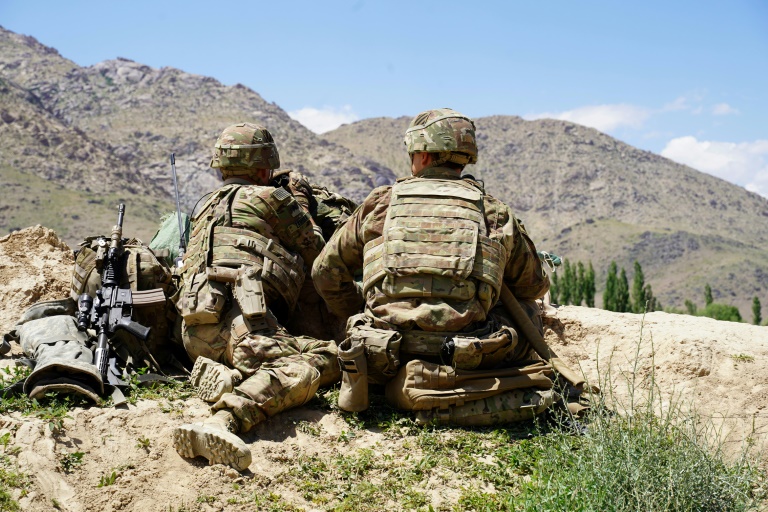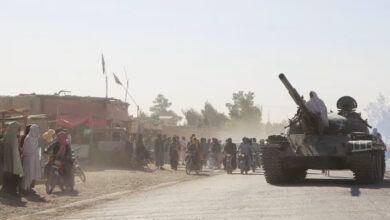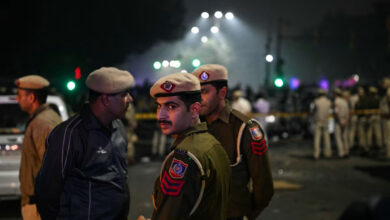
The US and the Taliban are set to sign a historic agreement that would pave the way to ending America’s longest war, the bitter foes announced Friday, hours after Kabul said a week-long partial truce across Afghanistan would kick off this weekend.
If that so-called “reduction in violence” holds, it would mark a major turning point in the gruelling conflict and set the conditions for a deal that could, ultimately, pull US troops out after more than 18 years and launch Afghanistan into an uncertain future.
Both US Secretary of State Mike Pompeo and the Taliban issued statements saying they had agreed to sign the accord on February 29 in Doha, following the one-week partial truce.
“Upon a successful implementation of this understanding, signing of the US-Taliban agreement is expected to move forward,” Pompeo said, adding negotiations between the Taliban and the Afghan government would “start soon thereafter”.
Afghanistan’s National Security Council spokesman Javed Faisal and Taliban sources earlier said the “reduction in violence” between US, Taliban and Afghan security forces would begin Saturday.
The United States has been in talks with the Taliban for more than a year to secure a deal in which it would pull out thousands of troops in return for Taliban security guarantees and a promise to hold peace talks with the government in Kabul.
A reduction in violence would show the Taliban can control their forces and demonstrate good faith ahead of any signing, which would see the Pentagon withdraw about half of the 12,000-13,000 troops currently in Afghanistan.
In a statement, the Taliban said warring parties would “create a suitable security situation” ahead of a deal signing.
One Taliban source in Pakistan said that if an agreement is signed on February 29, talks between the Taliban and the Afghan government, needed to cement a broader peace deal, are slated to start March 10.
Stand down
In Afghanistan’s southern province of Kandahar, which is seen as the Taliban’s heartland, one insurgent told AFP he had received orders to stand down.
However another Taliban commander based in Kandahar, Hafiz Saeed Hedayat, said he had only been ordered to refrain from attacking major cities and highways.
“This means maybe the violence will continue in the districts,” Hedayat said.
Taliban expert Rahimullah Yusufzai said the move signalled a wider change in thinking for both the Taliban and the US after years of fighting.
“Both sides have shown their commitment to sign the peace deal, and it’s a big development — a significant one,” he said.
The US and the Taliban have been tantalisingly close to a deal before, only to see President Donald Trump nix it at the eleventh hour in September amid continued insurgent violence.
Any truce comes fraught with danger, and analysts warn the attempt to stem Afghanistan’s bloodshed is laced with complications and could fail at any time.
Worse still, they say warring parties could exploit a lull to reconfigure their forces and secure a battlefield advantage.
The reduction in violence is “still just the first step to get to intra-Afghan negotiations,” Andrew Watkins, a senior analyst with the International Crisis Group, told AFP.
“Those talks will be a tough road of their own, but are the best avenue to peaceful settlement to Afghanistan’s conflict.”
On Thursday, the deputy leader of the Taliban said the insurgents are “fully committed” to a deal with Washington.
“That we stuck with such turbulent talks with the enemy we have fought bitterly for two decades, even as death rained from the sky, testifies to our commitment to ending the hostilities and bringing peace to our country,” Sirajuddin Haqqani wrote in an opinion piece in the New York Times.
Haqqani is also head of the Haqqani network, a US-designated terror group that is one of the most dangerous factions fighting Afghan and US-led NATO forces in Afghanistan.
Since the US-led invasion of Afghanistan after the September 11, 2001 attacks, America has spent more than $1 trillion in fighting and rebuilding in Afghanistan.
About 2,400 US soldiers have been killed, along with unknown tens of thousands of Afghan troops, Taliban fighters and Afghan civilians.
Reporting by AFP
Image: US soldiers look out over hillsides during a visit of the commander of US and NATO forces in Afghanistan in 2019 (AFP/File/THOMAS WATKINS)




